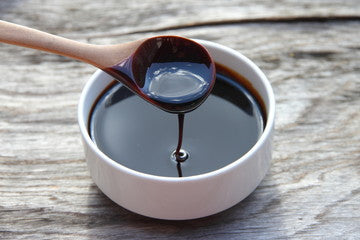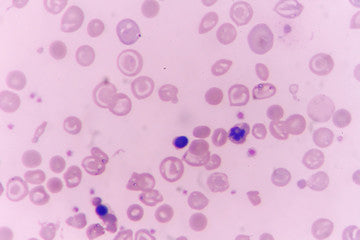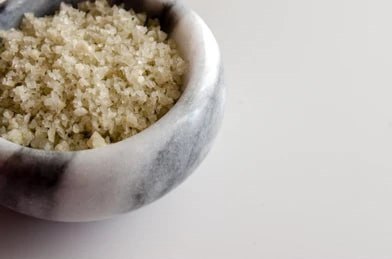13 Best Fish to Eat, According to Doctors


Related products
Eating Fish has multiple scientifically proven benefits. Regular consumption of fish offers essential minerals like vitamin D and high-quality protein. In addition to that it contains omega-3 fatty acids, which are critical for heart and brain function. While taking advantage of these great benefits, making informed decisions is important inorder to ensure the seafood is healthy for humans and sustainable for our seas.
When choosing what seafood to eat it is important to consider the type of fish that is nutrient-dense, low in mercury, and high in omega-3s. Researchers at NHS England claim that omega-3 fatty acids aid in reducing inflammation in the body, which enhances cognitive function and reduces cardiovascular disease risk factors like high blood pressure and cholesterol.
Since long-term exposure to mercury, a dangerous heavy metal present in many marine organisms, can have detrimental effects, especially for developing foetuses and expectant mothers. As a result, selecting fish with lower mercury levels guarantees safer food choices.
Here are the top best fishes to eat that professionals, including nutritionists and general practitioners, have suggested. These suggestions are based on the species' nutritional profile, which is mostly made up of its omega-3 concentration, the documented dangers of possible pollutants (such methylmercury), and sustainable farming or fishing methods.
Salmon

Salmon is a popular choice among health enthusiasts worldwide due to its large nutritional profile. In addition to vitamins B12 and D, it has an exceptionally high amount of essential omega-3 fatty acids. In many ways, these nutrients help the human body function at its peak health.
Many studies throughout the world have found that "Regular consumption of fish containing omega-3s reduces risk factors such as blood pressure and cholesterol levels associated with cardiovascular diseases." One such study was undertaken by Dr. Walter Willet of the Harvard School of Public Health. Omega-3 fatty acids are known to enhance heart health by lowering inflammation in the body.
Meanwhile, one serving offers almost the daily requirement of vitamin D, which fortifies bones and promotes calcium absorption, an adequate intake has an inverse association with the risk of osteoporosis in older people.
The greatest methods for preparing food include grilling, baking, and poaching since they not only retain the most nutrients but also result in a tasty, texture-rich dish. Because salmon's inherent oil makes it soft and moist when cooking, you don't need to use a lot of fats or oils.
Sardines

Sardines are without a doubt one of the best seafood choices due to their numerous health benefits. Rich in omega-3 fatty acids, calcium, and vitamin D, they offer a nutrient-dense powerhouse in a little package.
In order to reduce inflammation and enhance brain function, omega-3 fatty acids are essential. On the other hand, calcium and vitamin D are essential elements that fortify bones and prevent conditions like osteoporosis.
Prominent physicians like Dr. David Katz of Yale University's Prevention Research Centre say sardines are good for bone health. He goes on to say that "as one of nature’s richest sources of Calcium along with Vitamin – important nutrients promoting bone integrity – it remains an ideal addition to diet."
Sardines' remarkable nutritional value, low mercury level, and exceptional sustainability rates make them a popular choice for many people.
Mackerel
Mackerel is a special kind of seafood because of its great nutritional value. It is well known for being a high source of omega-3 fatty acids and for significantly improving heart and brain health by reducing inflammation throughout the body.
In addition to these healthy fats, Mackerel provides substantial levels of B vitamins, which are critical for energy production and enhancing cognitive function. This fish is an excellent all-around nutritional package because it contains selenium, which supports healthy thyroid function and fortifies antioxidant defences.
To maximise the nutritional value of mackerel without adding unnecessary extras like saturated fats or sodium, which are commonly found in fried or highly processed foods, Jamie Oliver, a culinary artist who focuses on preserving the natural flavour profile and nutrient retention during the cooking process, recommends grilling or smoking the fish.
Because of their short lifespan, mackerel usually do not collect mercury levels to the same extent as species with longer lifespans. In terms of bioaccumulation problems associated with consuming large predatory fish that are known to be polluted, like swordfish, tuna shark, etc., this makes them a safer choice.
Cod

When it comes to the holy grail of nutritious seafood, cod unquestionably tops the list. It is praised by health experts for its exceptional nutritional profile and flaky white flesh, in addition to its popularity for its culinary versatility.
In contrast to other fish species, cod is a fantastic low-fat source of high-quality protein that is necessary for both promoting feelings of fullness, which aids in weight management, and for muscle building and repair. About 15 grams of protein, or nearly 13% of the dietary value (DV) for protein, may be found in a 3-ounce portion of raw cod.
Furthermore, "Protein-rich foods such as lean meats contribute significantly towards cellular metabolism ensuring optimal energy production from consumed food contributing directly towards alleviated fatigue or lethargy eventually improving quality life," according to Dr. Sarah Brewer, the top nutritionist in the UK. Cod is a rich source of B vitamins, including vitamin B6 and niacin (B3). B vitamins, especially those involved in energy-producing metabolism, are found in poultry, eggs, dairy products, beans, and pulses.
Remember that baking, boiling, or adding soups does not alter the nutritional value or the integrity of the flavour in order to maximum benefit consumption. A lower risk of heart problems is associated with weekly meal consumption.
One interesting thing about cod is that depending on their surroundings, they can change colour. The ability to comprehend a range of aquatic species better is highlighted in an intriguing study that was published in aquatic biology.
Trout

Trout is a popular fish among seafood lovers. It is high in nutrients and has a significant favourable effect on one’s health. Its high omega-3 content is significant since the body needs these vital fatty acids to reduce inflammation and maintain heart and brain function.
Trout's natural ability to adapt to a variety of water conditions, including fresh streams and salty sea waters, is an intriguing feature that sets them apart from other varieties. This allows gastronomic adventurers to enjoy a wide range of flavours depending on their habitat.
Dr. Michael Greger, M.D., the founder of NutritionFacts.org and a prominent proponent of nutrition-based medicine, has endorsed trout for its potent nutrient combination, highlighting its high potassium content and its function in boosting heart health and helping to regulate blood pressure.
Notably, trout not only has excellent health benefits but is also highly regarded by chefs around the world because of its adaptability, which permits it to be prepared in a variety of ways without sacrificing flavour or texture integrity. The most popular preparations are baked or grilled, which, when done correctly, allow for the full expression of flavour and the desired crispness.
Herring
Known for its high nutritional value, herring is an excellent source of omega-3 fatty acids, vitamin D, and selenium. These nutrients promote heart health, strengthen the immune system, and support cognitive function, respectively.
Herring is incredibly flexible when it comes to preparation methods. Popular when smoked or pickled, it also adds unique crunchy textures that are difficult to resist when grilled, yielding equally delectable results. One characteristic that distinguishes herrings from many other marine animals is their "countershading" ability, which effectively camouflages them from predators.
Halibut
Halibut is an excellent source of lean protein and contains essential nutrients like B vitamins and magnesium that are essential for optimum health. Halibut is unique in that it contains a healthy amount of vitamin D. Calcium phosphorus is a mineral that is rarely found in adequate levels in the typical western diet, but it is crucial for strong bones because it makes it easier for the body to absorb it, according to certified dietician Katherine Zeratsky of the Mayo Clinic in Minnesota, US.
According to renowned preventative medicine expert Dr. David L. Katz of Yale University School of Public Health in the United States, halibut's high-quality protein content makes it an excellent choice for improving muscle performance. Additionally, its high magnesium concentration aids in the regulation of heart rhythm and neuronal activity.
This flatfish not only offers a nutritious diet but also a range of preparation possibilities that bring out its delicate flavour and rich texture. The bulk of the nutrients are preserved and the flavour profile is enhanced when halibut is baked or grilled at moderate temperatures until the flesh turns opaque, making it a nutritious gourmet treat.
Tilapia
Being a fantastic source of lean protein is just one of the many health benefits that have made tilapia more and more popular in recent years. Being a low-fat fish, it has a significant impact on weight management and overall health.
One interesting characteristic of tilapia is their adaptability; these freshwater fish can thrive in harsh conditions where other fish species often die. They now play a significant part in aquaculture worldwide, offering individuals from a range of socioeconomic situations an affordable seafood option.
Try baking or grilling this versatile ingredient with your favourite spices to maintain its maximum nutritional value while still savouring its delicious flavours, as frying increases the amount of fat per serving.
Mahi-Mahi
Mahi-mahi, or dolphin fish, has a delicious flavour and several health benefits. This low-fat protein source is recommended by American nutritionist Dr. Jonny Bowden for weight management and muscle growth.
Mahi-Mahi are unique because of their vibrant colours; the golden tones on their sides and the bluish tones on their bodies combine to produce an odd visual appeal.
Greenpeace's Willie Mackenzie suggests that consumers choose fish that is ethically sourced due to concerns about overfishing, and that grilling fillets with a little seasoning brings out their natural flavour for delicious dinners. Thus, eating Mahi-Mahi not only satisfies your hunger but also contributes to the preservation of aquatic habitats.
Anchovies
Anchovies are small, oily fish that are commonly used in Mediterranean and Southern European cuisine. They are well-known for having a high concentration of omega-3 fatty acids, which lower blood pressure and reduce inflammation to assist enhance cardiovascular health.
Renowned dietician Kimberly Snyder highlights the benefits of anchovies as a high-quality protein source that contains trace amounts of essential minerals like calcium and iron. Other vital nutrients include niacin, which is known to raise HDL "good" cholesterol levels, and selenium, an antioxidant that is necessary for DNA synthesis and shields cells from damage.
Dr. Michael Greger, M.D., noted that anchovies are safer to eat without compromising nutritional content because of their small size, which naturally results in lower mercury levels than larger predatory fish.
Oysters
Usually reserved for rare occasions or fine dining, briny, plump oysters offer several impressive health benefits. They are well known for being a powerful source of essential nutrients and for being particularly strong in protein and low in fat, much like their seafood alikes.
One feature that sets oysters apart from other molluscs is their exceptional zinc content. In actuality, only six medium-sized raw oysters have more than 30 mg of zinc, which is nearly three times the daily allowance that NHS UK advises adults to take (7.5 mg for women and 9.5 mg for men). Zinc is necessary for a number of bodily functions, including maintaining good vision, healing wounds, and increasing immunity.
Pollock
Pollock is a marine treasure that offers several health benefits. It is rich in protein and low in fat, and it is further boosted with vital nutrients including vitamin B12 and selenium.
Pollock differs from other fish species due to its mild flavour and pale colouring, and it is used as a base ingredient in a variety of dishes, including imitation crab sticks. Conversely, eating unprocessed pollock guarantees higher nutritional contributions without being exposed to the dangerous chemicals used in manufacturing.
It is advised to use baking or grilling as preparation methods to preserve this nutrient-rich profile and enhance flavour. Its neutral colour scheme makes it possible to use a wide range of seasonings, ensuring that your meal will always have an interesting combination.
Crab
Crab is a nutritional powerhouse since it is full of essential fats and proteins. This mollusc is a fantastic source of vitamins, such as Omega-3 fatty acids, which promote heart health, and vitamin B12, which improves cognitive function.
Best consumed steamed or boiled with seasonings, crab provides both gourmet enjoyment and nutritional value. Customers must choose responsibly farmed crabs over wild ones, though, because of concerns about marine biodiversity.
The ability to regrow lost limbs makes these animals unique! All things considered, crabs offer incredible nutritional benefits together with natural wonders and encourage sustainable eating habits.
Shrimp
Shrimp, a popular seafood worldwide, provides significant health benefits. It is rich in protein and essential nutrients like selenium and vitamin B12; yet low in calories aiding weight loss initiatives. Its unique attribute lies in carrying astaxanthin – an antioxidant that Oregon State University researchers found reduces inflammation while boosting immune function.
However, caution must be exercised when choosing between sustainably farmed or wild-caught varieties since some farming practices involve antibiotic use warns Dr Jason Halford professor of appetitive behaviour psychology at Liverpool University.
Takeaway
In the quest for healthy diets, a number of fish options stand out as nutritious powerhouses. Salmon and mackerel are at the top of the list due to their high omega-3 content. While tilapia is a fantastic source of lean protein and aids in weight management, prawns are low in calories and high in essential minerals like vitamin B12 and selenium, which improve cardiovascular health. While each seafood option has advantages of its own, when considering the health of humans and the environment, it's crucial to choose wild or sustainably farmed seafood. Thus, consuming a variety of these recommended fishes enhances overall quality of life and helps maintain a balanced diet.
Frequently Asked Questions
What is the top 5 healthiest fish?
Because of their high omega-3 content, low mercury levels, and resulting high nutritional density, many doctors and nutritionists believe that salmon, mackerel, sardines, trout, and cod are the five healthiest fish species.
Which fish is OK to eat everyday?
Daily diets must include moderate consumption of sardines or Atlantic mackerel, which have reduced mercury levels.
What fish is good for aging?
Fatty fish like salmon are good for anti-aging because they contain rich Omega-3, which helps skin retain moisture and reduce wrinkles over time, giving one a healthier, younger-looking complexion even as one ages.










 Rated Excellent by 26,523+ Reviews
Rated Excellent by 26,523+ Reviews